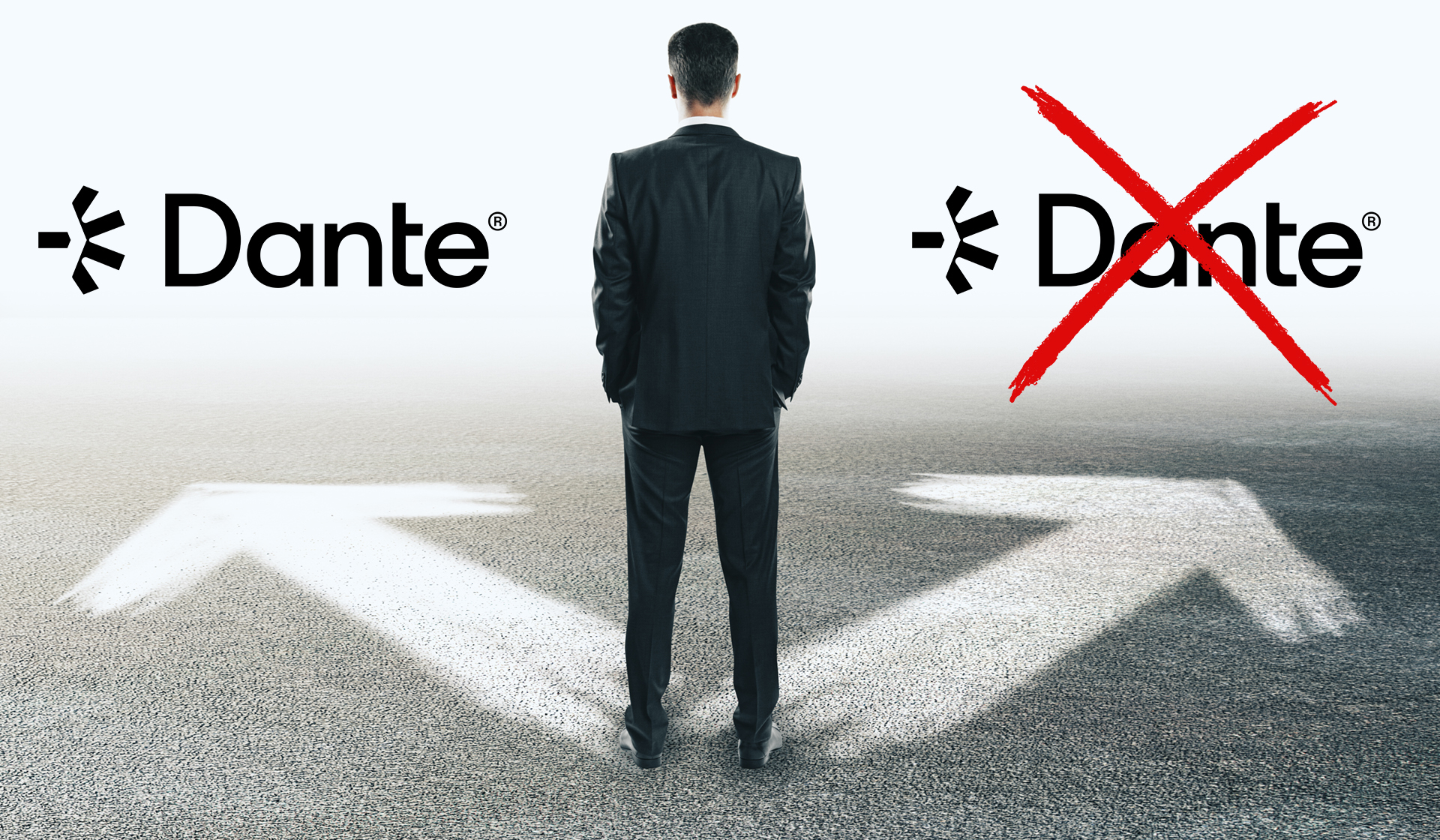
With our recent announcement regarding the availability of Dante-enabled DSPs in our Atmosphere platform, we wanted to discuss reasons why a designer or integrator should choose Dante-enabled products and also call out a few scenarios where it might not be needed.
Dante significantly enhances audio systems by addressing several key challenges:
- Dante simplifies cabling and infrastructure by using standard Ethernet cables, eliminating the need for different types of analog cables and connectors. This reduces installation time and cost and minimizes the physical space required for cables, streamlining the overall setup.
- Dante offers unparalleled scalability, allowing users to easily expand their audio systems by adding more channels or devices through simple network connections.
- Dante ensures high-quality audio transmission with minimal latency and jitter, supporting uncompressed, multi-channel audio over standard IP networks.
- The real power of Dante is unleashed with Dante Controller, which provides centralized control and management capabilities. This software allows users to route audio signals, configure devices, and monitor performance from a single interface, simplifying the management of complex audio setups.
Dante's widespread adoption and support by numerous manufacturers ensure compatibility and interoperability across a broad range of professional AV equipment, allowing integrators to mix and match products from different brands without encountering compatibility issues. Dante's ease of integration with existing network infrastructures supports high channel counts and allows for seamless upgrades, making it a cost-effective, future-proof solution by leveraging existing network equipment and reducing the need for specialized audio cabling and hardware.
Scenarios where Dante may not be necessary
While Dante offers many advantages for AV installations, it is not always necessary or the best fit for every situation. Factors such as scale, budget, existing infrastructure, technical requirements, and specific use cases should all be considered when deciding whether to implement Dante in a professional AV setup:
Small-Scale Installations:
In small AV setups with limited audio channels, traditional audio cabling may suffice. For example, in a small conference room or a simple public address system, the complexity and cost of implementing Dante might outweigh its benefits.
Budget Constraints:
Dante can introduce additional costs due to the need for compatible hardware (such as Dante-enabled mixers, microphones, and speakers) and potentially higher licensing fees. In budget-sensitive projects, opting for more cost-effective solutions might be more appropriate.
Legacy Systems:
In environments with existing, functional legacy audio systems, integrating Dante could be unnecessary and costly. If the current setup meets the required audio quality and functionality, upgrading to a networked audio system might not be necessary.
Minimal Audio Channels:
For installations that require only a few audio channels, the advantages of a networked system might not be significant. Simple point-to-point digital audio solutions could be more straightforward and cost-effective.
That said, the benefits of Dante far outweigh the drawbacks in most of today’s installations. As the industry’s largest AV-over-IP ecosystem with over 4,000 available endpoints, Dante offers the exciting potential to break out audio to and from audio devices without the need for extra hardware or format conversion. Dante is also designed for deployment on enterprise networks, and IT-level security and management are available via Dante Domain Manager or SaaS-based Dante Director for enhanced functionality everywhere. If you’re not already using it, Dante could grow into the driving factor behind your future AV setups and become your new audio BFF.


